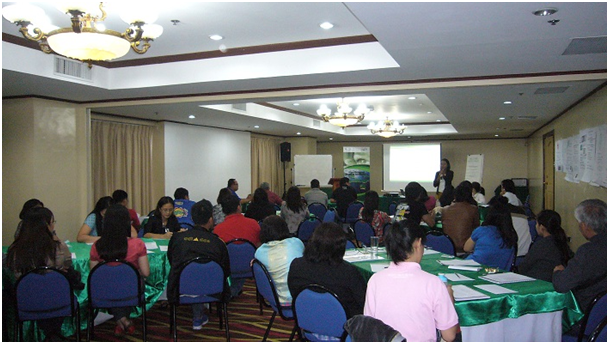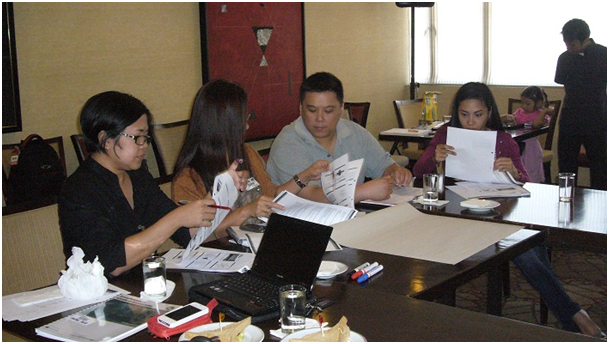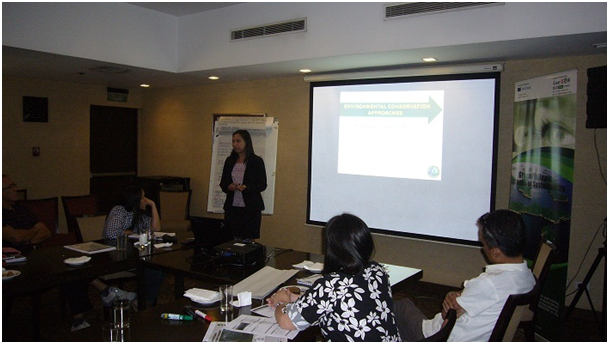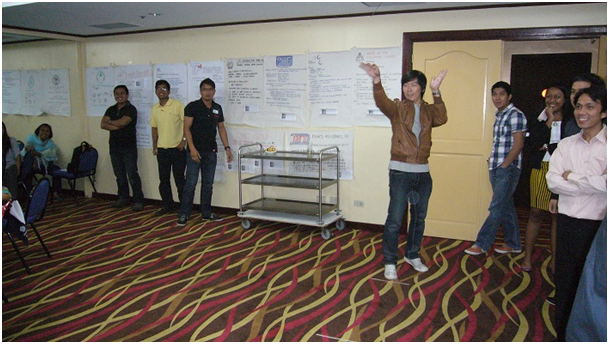Some days take consultants out of their daily routines in the office or companies visits. Some days they conduct meetings with clients to teach them new things focused on environment connected with savings they can apply in their companies. One of those meetings is also workshop 4 which main aim is to introduce topics like eco-controlling, eco-accounting and Green procurement. Topics, which companies that want to be successful with their environmental projects, should not keep away from.
Workshop 4 starts for participants in already familiar fashion– they register then draw down their mood on mood meter and receive supporting materials and of course, first batch of chocolates. The training itself opens with short introducing speech and prepare them for the first topic of the day – Eco-controlling and Environmental Indicators.
Eco-controlling and Environmental indicators are subjects every company participating in GPIoS project definitely comes across. These are firmly connected with environmental report which is one of the outputs of company’s green activities and also requirement for later validation. But what do these terms actually represent? Eco-controlling serves as tool which checks effectiveness of environmental programs implemented in company. If eco-controlling is a tool, then environmental indicators are measurements that show how the company’s status is when it comes to environment. The ECOSWITCH team are skillful enough to know that some participants might struggle to understand this concept completely so they try to engage them in the discussion – share their own experience (if they have any), their achievements and also help them to clear possible misunderstandings.
Second topic of the day is eco-accounting (monetary assessment of material flow). Under this theme is hidden way on how to define, sort and calculate environmental costs in the company. Implementing eco-accounting in company does not only help to save money in their essential sense but it also helps to reduce unnecessary use of resources.
Morning session of workshop is finished with interactive exercise on environmental controlling. Participants are divided into groups and presented with the case study of a company. Their task is to build on environmental controlling system for a given specific area. In this way, participants can utilize knowledge they gained and also try the process of controlling in draft. It is interesting how participants from different industry areas share their different point of views during exercise. And since this exercise is conducted as a competition where winners get the chocolates, it stimulates the participants to do their best.
After the lunch break, when the interactive exercise on Eco-Controlling is finished, comes the lighter part of workshop 4. That is concentrated on introduction of Ecological and Sustainable purchasing and Green Procurement/Eco-Labeling in the Philippines.
Topic of Sustainable Procurement in the Philippines is mainly built on showing participants what companies based in the Philippines do. They get not only to see real-life examples their actions and achievements in the field, but also the guidelines leading to sustainable purchasing are presented.
The last lecture is dedicated to National Ecolabelling Programme – Green Choice Philippines (NELP-GCP) which is administrated by the Philippine Center for Environmental Protection and Sustainable Development, Inc. (PCEPSDI). This topic is presented by Ms. Maureen Grace V. Lebria who is representative of PCEPSDI and current Programme Manager for Green Choice Philippines.
The workshop is closed by one more interactive exercise and this time, it gets physical. The purpose of this exercise is to teach participants to take well calculated risk. Because if you take too much risk you most probably will not be successful. On the other hand, if you do not take risks at all, you will not continuously improve. So this task is to teach participant how to take the right amount of risk to be successful. They are divided into teams, placed in front the loop and got basketball ball into their hands. Now it is up to them to decide which member will shoot from which distance to gain points to win.
It was again a day of “learning with fun” with the ECOSWITCH team!
Original post from GPIos/Ecoswitch-ph
Posted on April 30, 2013 in Ecoswitch Updates by Jill Padua


